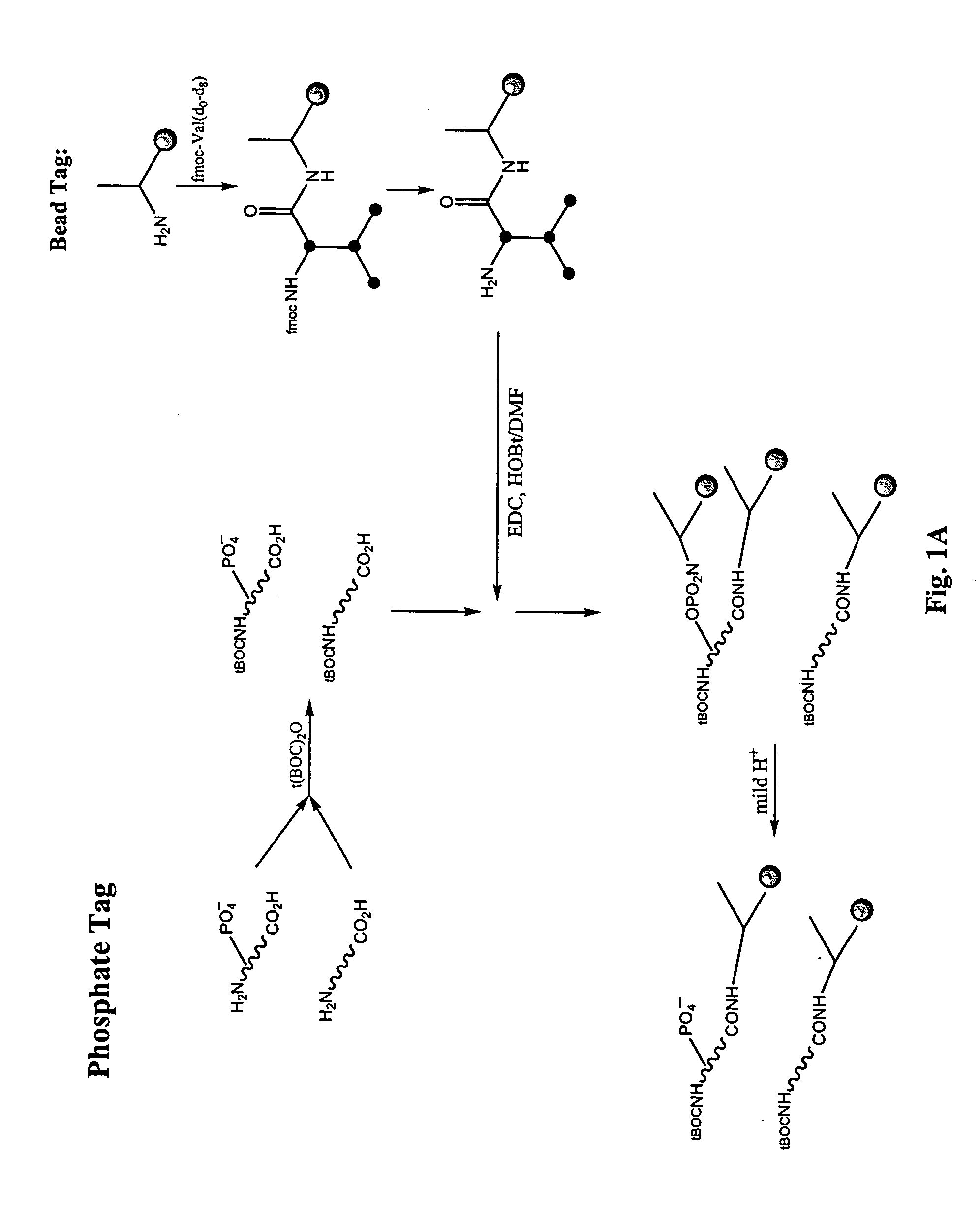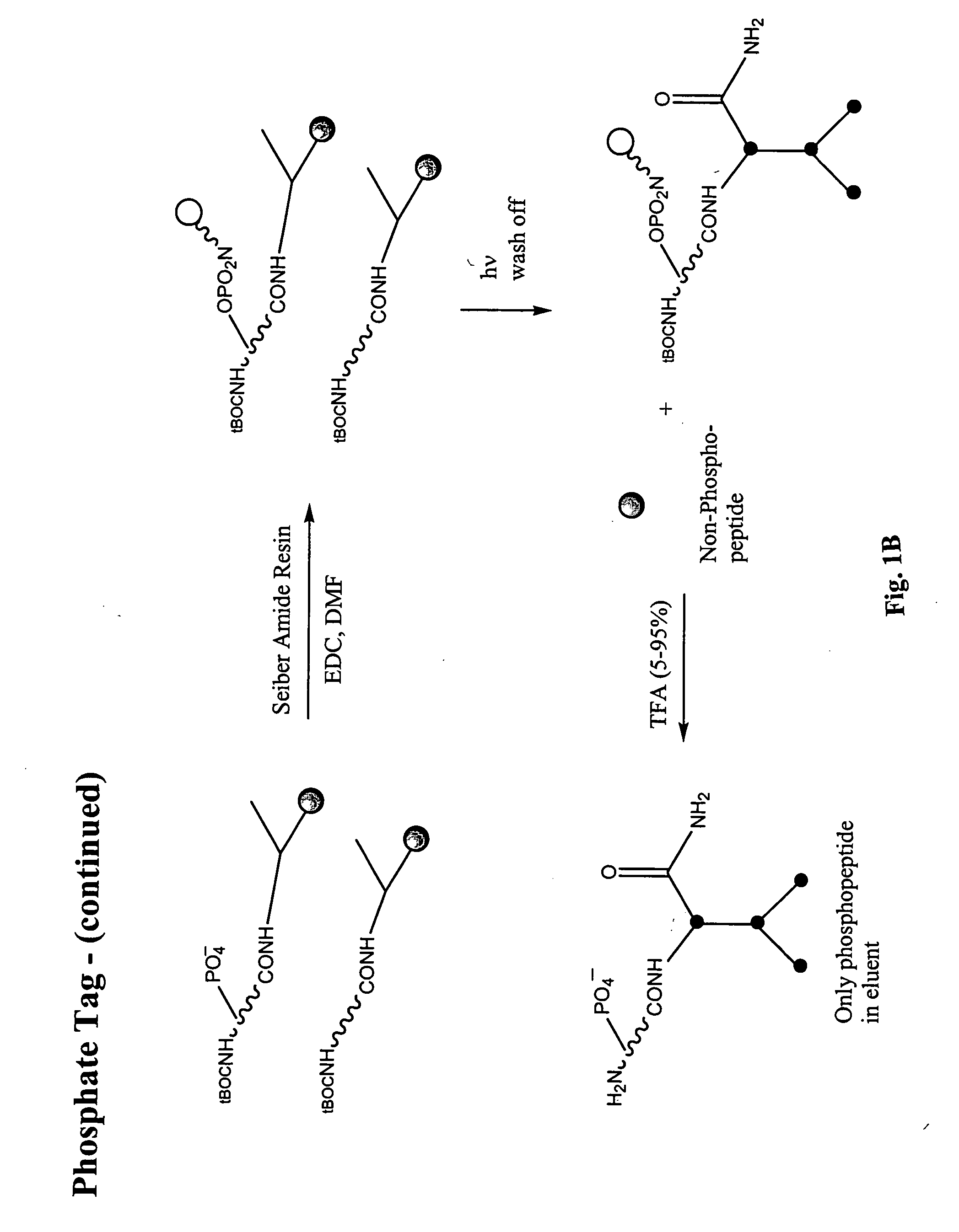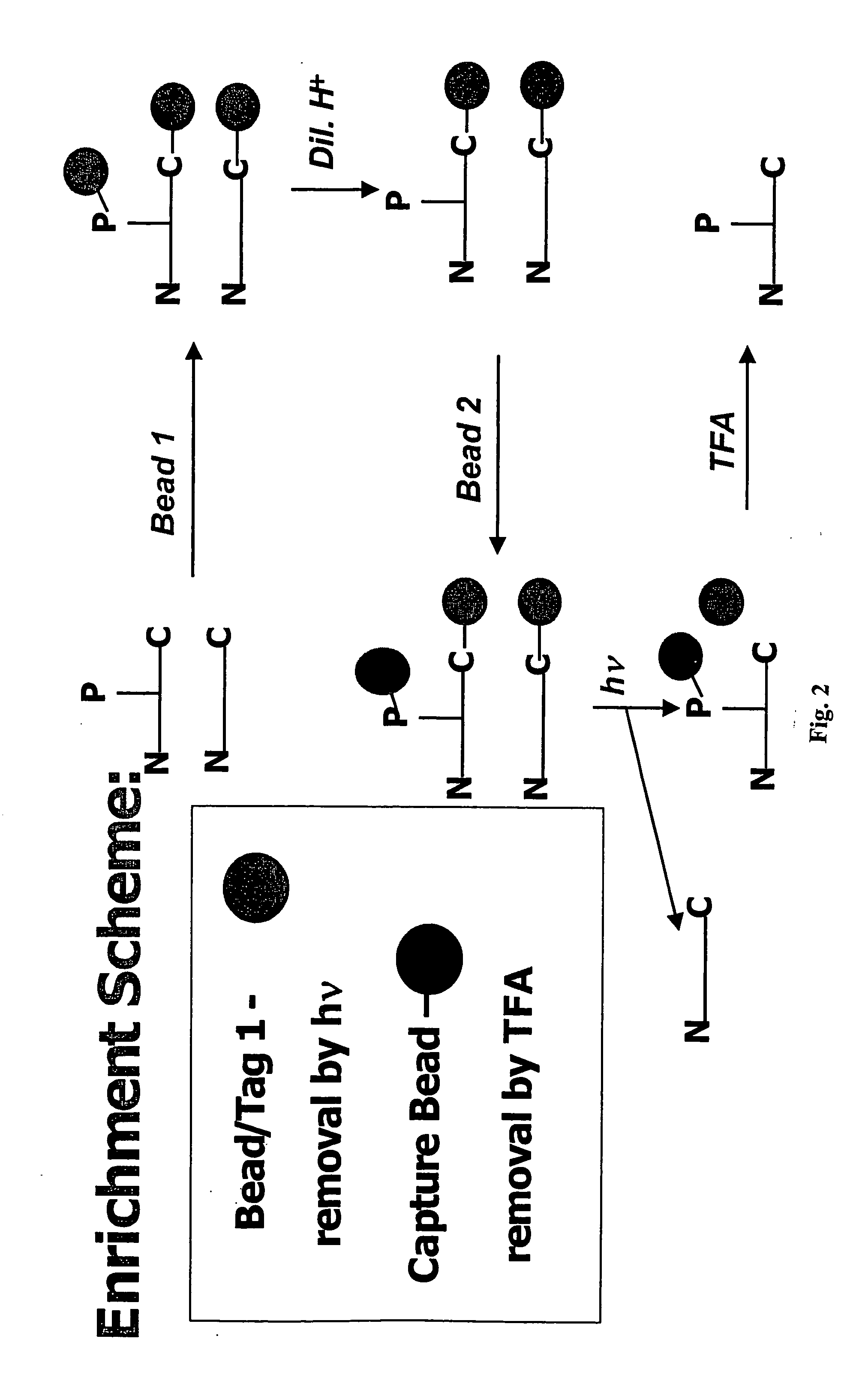Enrichment of phosphate peptides for proteomic analysis
a proteomic analysis and phosphate peptide technology, applied in the field of enrichment of phosphate peptides for proteomic analysis, can solve the problems of deterioration in the resolution of electrophoretic separation, time-consuming methods, and difficulties in using 2-d gel electrophoresis/mass spectrometry
- Summary
- Abstract
- Description
- Claims
- Application Information
AI Technical Summary
Benefits of technology
Problems solved by technology
Method used
Image
Examples
examples
I. Nitrogen Protection of Peptide Samples:
[0058] Peptide samples were placed into a 50:50 mixture of water and acetonitrile. Boc-ON (Aldrich # 19,337-2) was added at a 1.1 molar excess along with 1.6 molar excess of triethylamine as compared to the molar concentration of peptides in the sample. The reaction mixture became clear and was shaken at room temperature for 2.5-4 hr. The acetonitrile was removed in vacuo and the samples were dried down.
II. Attachment of Photo-Cleavable Resin (to Phosphate and Carboxylate Groups)
[0059] Fmoc-Aminoethyl Photolinker AM Resin (Calbiochem #01-64-0135) was prepared for coupling to peptide samples in the following way: At least an equimolar or greater amount of resin (0.6 mmol N / g) in relation to peptides present in the peptide sample was deprotected by placing the resin into a 20% solution of piperdine in anhydrous DMF. This was shaken at room temperature for 30 minutes. The resin was then filtered and rinsed with DMF. A combined solution of ...
PUM
| Property | Measurement | Unit |
|---|---|---|
| molecular weight | aaaaa | aaaaa |
| molar concentration | aaaaa | aaaaa |
| molar concentration | aaaaa | aaaaa |
Abstract
Description
Claims
Application Information
 Login to View More
Login to View More - R&D
- Intellectual Property
- Life Sciences
- Materials
- Tech Scout
- Unparalleled Data Quality
- Higher Quality Content
- 60% Fewer Hallucinations
Browse by: Latest US Patents, China's latest patents, Technical Efficacy Thesaurus, Application Domain, Technology Topic, Popular Technical Reports.
© 2025 PatSnap. All rights reserved.Legal|Privacy policy|Modern Slavery Act Transparency Statement|Sitemap|About US| Contact US: help@patsnap.com



